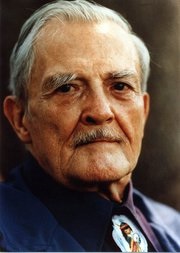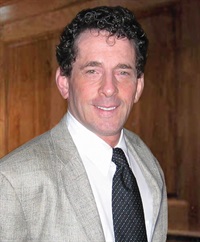Information
Un Seminario de Enseñanza con Milton Erickson Parte 1 - Sembrando una Tema
Original Program Date :
Descripción:
En esta grabación, el Dr. Erickson enseña a un grupo de estudiantes hipnotizados reunidos dentro de su sala de estar. Erickson desestabiliza las perspectivas fijas de conciencia física de los estudiantes. Preguntando a un alumno: "¿Qué músculos usas para ponerte de pie?" Erickson planta una semilla en la mente de los estudiantes. Este tema inicial de "ponerse de pie" se convertirá en una realización a lo largo de esta serie de videos de tres partes.
En la primera parte de esta serie de tres partes, serás testigo de cómo Erickson planta una semilla sin problemas, conecta los puntos, desarrolla un tema y cierra el ciclo en un período de clase. Aprenderá cómo Erickson condujo la disociación a través del tempo, el contenido y el tono de sus palabras. Aprenderá a decidir el momento adecuado para ingresar a la regresión de edad y cómo inducir la regresión de edad sin ninguna inducción formal. Al final de esta grabación, el Dr. Zeig analiza la elección de técnicas de Erickson y explica magistralmente la metodología de Erickson.
En este video aprenderá lo siguiente y más:
- Desestabilización
- Sembrando un tema
- Amnesia estructurada
- Disociación
- Regresión de edad
Milton H. Erickson, MD

Milton H. Erickson, MD, was an American psychiatrist who specialized in medical hypnosis and family therapy. He was founding president of the American Society for Clinical Hypnosis and noted for his approach to the unconscious mind as creative and solution-generating.
Dr. Erickson was plagued with enormous physical handicaps for most of his life. At age 17, he contracted polio and was so severely paralyzed that doctors believed he would die. While recovering in bed, almost entirely lame and unable to speak, he became strongly aware of the significance of nonverbal communication – body language, tone of voice, and the way that these nonverbal expressions often directly contradicted the verbal ones. He also began to have “body memories” of the muscular activity of his own body. By concentrating on these memories, he slowly began to regain control of parts of his body to the point where he was eventually able to talk and use his arms again. His doctor recommended exercising his upper body only so Milton Erickson planned a 1,000 miles canoe trip to build up the strength to attend college. His adventure was challenging, and although he still did not have full use of his legs at the end, he was able to walk with a cane.
The Ericksonian approach departs from traditional hypnosis in a variety of ways. While the process of hypnosis has customarily been conceptualized as a matter of the therapist issuing standardized instructions to a passive patient, Ericksonian hypnosis stresses the importance of the interactive therapeutic relationship and purposeful engagement of the inner resources and experiential life of the subject. Dr. Erickson revolutionized the practice of hypnotherapy by coalescing numerous original concepts and patterns of communication into the field.
The novel psychotherapeutic strategies which Dr. Erickson employed in his treatment of individuals, couples, and families derived from his hypnotic orientation. Although he was known as the world’s leading hypnotherapist, Dr. Erickson used formal hypnosis in only one-fifth of his cases in clinical practice.
Dr. Erickson effected a fundamental shift in modern psychotherapy. Many elements of the Ericksonian perspective which were once considered extreme are now incorporated into the mainstream of contemporary practice.
Jeffrey Zeig, PhD

Jeffrey K. Zeig, PhD, is the Founder and Director of the Milton H. Erickson Foundation and is president of Zeig, Tucker & Theisen, Inc., publishers in the behavioral sciences. He has edited, co-edited, authored or coauthored more than 20 books on psychotherapy that appear in twelve foreign languages. Dr. Zeig is a psychologist and marriage and family therapist in private practice in Phoenix, Arizona.

